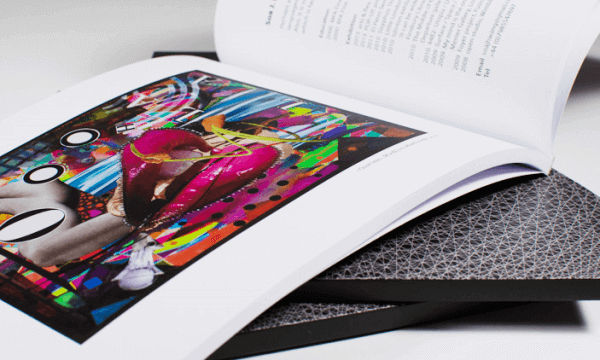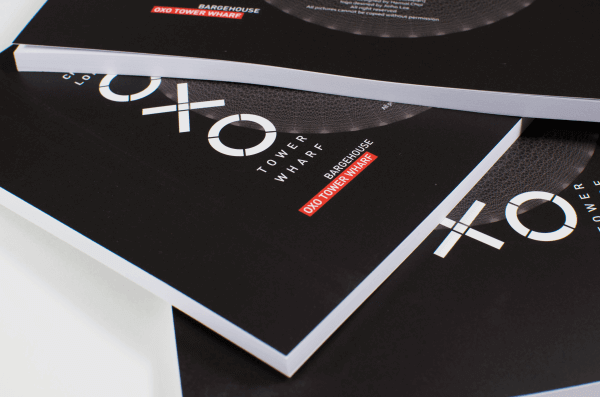Evolution of a company brochure

We recently printed a company brochure for an exhibition of contemporary artists in London. We first spoke to the client around 5 months before the date of going to print, and during that time the specification of their order evolved as they worked to meet their budget.
Company brochures don’t need to be expensive
Paperstock
Our client had plans to sell the brochures at the exhibition, so of course the paper stock needed to be of a good enough quality to prevent show-through of large areas of colour.
They decided on a thicker outer cover of 250gsm and text pages of 160gsm, both on an uncoated board.
Generally, the heavier paper stocks and paper from the renowned manufacturers (for example, G F Smith who’s annual paper sample pack probably costs more money than I spend in a week!) will be more pricey. Often, printers will be able to give you similar cheaper alternatives to the branded papers, which can achieve the look desired without the price tag.
Page size & No. of pages
The client wanted to give each artist a spread across two pages, as well as having a 4pp cover and several and introductory pages so we quoted for 86pp.
We discussed the possibility of reducing the artwork to A5 size to reduce the total cost of the job but agreed in the end that detail in the artwork may be lost and the text difficult to read.
Quite obviously, reducing the number of pages or size of your brochure will have an effect on cost but avoid the temptation of cluttering pages with information to save money – chances are that your messages won’t be clear.
Colour & Lamination
Originally we quoted the printing of between 100 and 300 brochures. With such small quantities we would usually print these digitally however with this job we printed the cover pages in CMYK lithographically due to the flat size of the landscape cover pages being too big for our digital press. Litho printing also produces a better result on large blocks of colour, which was a key feature in the cover artwork. We printed the text pages digitally in full colour, as normal.
During the binding process, the machine grasps hold of the pages. In order to prevent marking, we matt laminated the outer cover which also gave a luxury finish.
Artwork
The client put the artwork together themselves, but we guided them step-by-step when supplying the artwork and gave them suggestions on improvements for the best print-ready results.
Turnaround
We printed and delivered the company brochure ahead of schedule – giving the client headspace to focus on the other elements of the exhibition!

